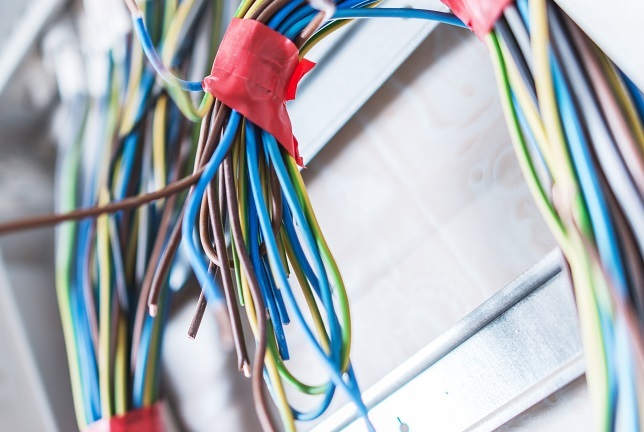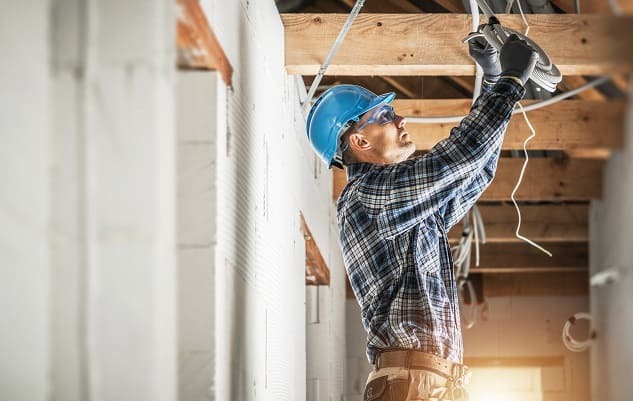
 Data Structure
Data Structure Networking
Networking RDBMS
RDBMS Operating System
Operating System Java
Java MS Excel
MS Excel iOS
iOS HTML
HTML CSS
CSS Android
Android Python
Python C Programming
C Programming C++
C++ C#
C# MongoDB
MongoDB MySQL
MySQL Javascript
Javascript PHP
PHPPhysics
Chemistry
Biology
Mathematics
English
Economics
Psychology
Social Studies
Fashion Studies
Legal Studies
- Selected Reading
- UPSC IAS Exams Notes
- Developer's Best Practices
- Questions and Answers
- Effective Resume Writing
- HR Interview Questions
- Computer Glossary
- Who is Who
What is the full form of CEP?
Introduction
Cable Entry Point (CEP) is a place of residence in which cables enter a building or organisation. (CEP) Wires are often routed, controlled, and protected in a specified place. A CEP can be put on an exterior wall or through the roof and frequently consists of a waterproof seal to keep water, dust, and other contaminants from coming into the shape.

Because it lets in external wires to be linked to internal electrical structures, the CEP is important for preserving proper connections. The CEP may also contain splitters or amplifiers to useful resources with signal distribution throughout the building. proper CEP management is needed to hold regular and secure network connectivity.
Importance and Functionality
It serves several key functions, including −
Cable management − The CEP permits correct cable routing and organization throughout the building. This saves the cables from damage and makes them less difficult to manage, lowering the chance of downtime due to cable failure.
Connectivity − The CEP serves as a focus for connecting external connections to a building's internal wiring systems. This enables efficient sign shipping to various devices across the building.
Security − The CEP can be dependent to limit access to the cables and equipment to only authorised employees. This contributes to the prevention of unauthorised access and potential security breaches.
Scalability − as the network requirements of a building develop, the CEP can be expanded or updated to address new cables and systems.
Types of CEPs
Here are some common types of CEPs −
Wall-mounted CEPs − these CEPs are normally put on a constructing's outdoors walls and are intended to protect cables from weather and other outside factors. CEPs which can be wall-established may be constructed to simply accept various cable sizes and may contain features inclusive of cable glands, weatherproof sealing, and cable management brackets.
Roof-installed CEPs − those CEPs are regularly placed on a building's roof and are utilised for larger installations in which cables should be routed over a more distance. Roof-mounted CEPs are frequently large and might residence more wires and equipment
Floor-mounted CEPs − these CEPs are placed on a constructing's floor and are intended for installations where wires need to be run from the outdoor to the internal. CEPs which might be set up at the floor are frequently large and may accept larger cables in addition to extra entry factors.
Cable Trays − while not precisely CEPs, they're an important issue of cable management structures. Cable trays are used to path and organise cables at some stage in a shape and may be positioned above ceilings, beneath floors, or on walls. Cable trays can help to lessen the amount of area required for cabling while also making it easy to access and hold cables when necessary
Installation and Maintenance
It is crucial to consider certain points when it comes to installing and maintaining a CEP. Trained professionals who have expertise in cabling and network infrastructure should handle the installation process. Proper cable routing, cable control, weatherproofing, and testing are important aspects to ensure the system is functioning correctly. Regular maintenance is necessary to avoid downtime and ensure proper functioning of the CEP.

Maintenance tasks include cleaning, equipment and cable inspection, component replacement, and testing to guarantee the system is working correctly. Upgrades to the CEP may be required with changing network requirements of a building. Examples of upgrades include expansion of the CEP, new equipment inclusion, or modification of current equipment to handle higher bandwidth or more modern network protocols.
Conclusion
A Cable entry point (CEP) is an essential part of a constructing's network structure. It performs a variety of tasks, such as cable management, connectivity, security, and scalability. CEPs come in a spread of patterns, including wall-mounted, roof-mounted, floor-mounted, rack-mounted, and cable trays, and the type of CEP chosen is determined by the unique needs of the building or facility.
A CEP must be properly installed and maintained to ensure dependable and secure community connectivity. Cleansing, inspection, repair of damaged components, and enhancements to deal with better bandwidth or more complex network protocols are examples of maintenance chores. retaining office work and adhering to safety necessities are also vital for proper CEP management.
FAQs
Q1. Who should install a CEP?
Ans: CEPs should be installed by skilled personnel with cabling and network infrastructure skills.
Q2. What is the maintenance required for a CEP?
Ans: Regular maintenance is required to guarantee that the CEP is operating effectively and to avoid downtime. Cleaning, examination of cables and equipment, repair of damaged components, and testing to ensure that the system is running properly are all examples of maintenance duties.
Q3. Can a CEP be upgraded?
Ans: Yes, as a building's network requirements evolve over time, changes to the CEP may be required. Upgrades may include increasing the CEP's size, adding new equipment, or upgrading current equipment to enable higher bandwidth or more modern network protocols.

